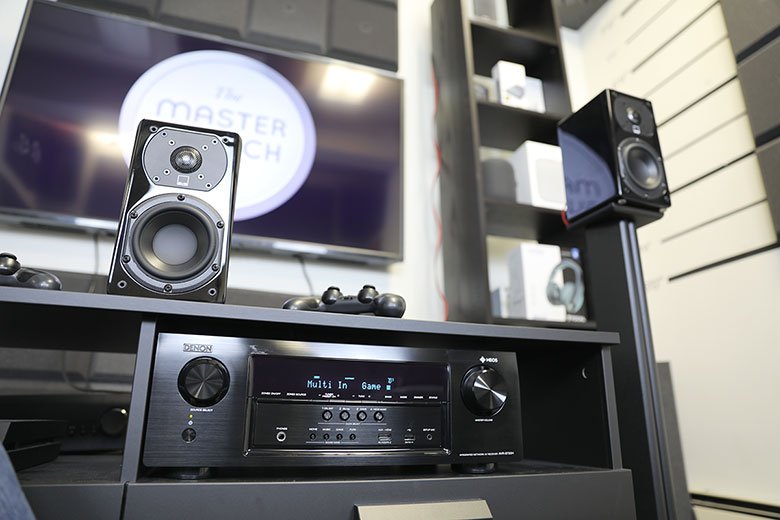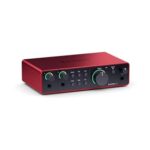Disclaimer: We may earn affiliate commission from qualifying purchases at no extra cost to you.
When choosing a Home Theater System, it is important to consider the room size and budget. There are many different components available for home theater systems, so it is important to evaluate your needs before making any major investments.
The first step in choosing a system is deciding what type of equipment you need.
This includes components such as speakers, receivers, amplifiers and Blu-ray players. Consider how many speakers you want in your system and what type of sound quality you require from them.
Next, determine the size of your room that will house the system and decide on an appropriate receiver or amplifier that can handle the power requirements for this space.
It is also wise to look at several brands when selecting your components as there can be significant differences between models in terms of features and sound quality.
Finally, take into consideration all associated costs including installation fees and warranty coverage if applicable.
- Step 1: Determine your budget
- Before you start shopping, decide how much money you’re willing to spend on a home theater system
- This will help narrow down the range of products and features available so that you can find something within your price range
- Step 2: Consider the size of your space
- The size of the room where you plan to install a home theater system is important when choosing one because it affects which components are necessary for adequate coverage and sound quality in the space
- Step 3: Research types of systems available
- Once you have an idea of what kind of system would work best for your needs, research different brands and models online or in stores to get an idea of what options are available in your price range and desired specifications (e
- , speaker type, receiver power)
- Step 4: Test out systems if possible before purchasing them
- If possible, take some time to test out different systems at electronics stores or other locations with demo units set up so that you can compare sound quality between various models firsthand before making a purchase decision
- Step 5 : Read customer reviews
- Look through customer reviews online for additional feedback about features such as ease-of-use or reliability before deciding on a particular model or brand for purchase
How to Select Home Theater Watts
When selecting home theater watts, it is important to consider the size of your room and what type of sound system you are using. Generally speaking, a larger room will require more wattage than a smaller one. Additionally, if you are using speakers that have higher sensitivity ratings, then less wattage may be required for optimal sound quality.
It’s also important to note that most home theater systems do not need extremely high wattages; in fact, too much power can actually cause distortion and other issues with your audio experience. Ultimately, the best way to determine what amount of watts you’ll need is by consulting an expert or researching online to find out what model best suits your needs.
Sony Home Theater
Sony Home Theater systems are the perfect way to bring the cinematic experience of a movie theater into your living room. With features such as advanced surround sound and 4K Ultra HD resolution, you can enjoy stunning visuals and superior audio for an immersive home entertainment experience. Sony’s lineup also includes Blu-ray players and streaming media devices, giving you access to all your favorite content.
Whether you’re looking for a basic system or something that will take your home theater setup to the next level, Sony has something for everyone.
Best Sound System for Home Theater
If you’re looking for a top-notch sound system for your home theater, you’ll want to consider the latest technology in surround sound. A good starting point is a 5.1 or 7.1 channel audio setup which includes five (or seven) speakers placed around the room and one subwoofer to provide deep bass sounds. Additionally, some systems come with an amplifier to boost power and performance.
To maximize your experience, look for features such as Dolby Atmos Audio or DTS:X immersive audio formats which create 3D soundscapes that will bring movies and music to life like never before!
Home Theater Systems Wireless
Wireless home theater systems are becoming increasingly popular due to their convenience and ease of installation. With a wireless setup, the components of your system can be placed in different rooms without having to run cables between them. This allows for greater flexibility when it comes time to rearrange furniture or move speakers around the room.
Additionally, many wireless home theater systems come with built-in streaming capabilities so you can enjoy all your favorite shows and movies on any compatible device with an internet connection.
Dolby Atmos Home Theater System
A Dolby Atmos Home Theater System is the perfect way to experience immersive, multidimensional sound in your own home. With up to 32 speakers, this system creates a truly enveloping audio experience that can bring any movie or game to life. Additionally, Dolby Atmos technology allows for sound objects like rain and helicopters to be placed precisely around you so that they seem as though they are coming from independent sources within the room.
Whether you’re watching movies or playing games on your favorite console, Dolby Atmos will transform your living room into an incredible entertainment destination.

Credit: www.worldwidestereo.com
How Many Watts is a Good Home Theater System?
A good home theater system typically should have at least 500 watts of power. This will ensure that the sound coming from the speakers is loud and clear enough to fill a large room with high-quality audio. Here are some factors to consider when selecting a home theater system:
• Room size – A larger space requires more wattage for optimal sound quality.
• System type – Sound bars, surround systems, and tower speakers require different amounts of power in order to deliver their best performance.
• Audio format – Dolby Digital or DTS formats need more wattage than analog signals like FM radio.
What is the Difference between 5.1 And 7.1 Home Theater?
The main difference between a 5.1 and 7.1 home theater is the number of speakers included in each system. A 5.1 system includes five speakers which are placed around the room, while a 7.1 system has an additional two rear surround sound speakers for added depth and detail to your audio experience:
• 5.1 systems include five channels (Left Front, Center, Right Front, Left Rear Surround and Right Rear Surround).
• 7.1 systems have seven channels with two extra rear-surrounds for better sound quality and fuller audio effect as compared to 5.1 systems
How to Choose a Speaker System for Your Home?
When choosing a speaker system for your home, there are several factors to consider. Firstly, think about the size of the room and how you plan to use it. Secondly, assess the type of sound you would like – whether treble or bass heavy.
Thirdly, decide on a budget that fits within your means. Finally, take into account any aesthetic preferences you have:
• Consider size & usage
• Assess sound quality desired
• Set a budget
What is the Difference between 2.0 And 2.1 Home Theater?
2.0 and 2.1 home theater systems have some significant differences, which can be seen in the audio output they provide. A 2.0 system consists of two speakers placed on either side of the listener, while a 2.1 is typically made up of two main speakers and one subwoofer designed to produce bass-heavy sounds.
The key differences between 2.0 and 2.1 home theaters are:
• A 2.0 system has two main speakers whereas a 2.1 has three
• A subwoofer is included in a 2.1 set up for improved bass response
• 2-channel stereo sound is provided by a standard stereo amplifier with the use of just two speakers in a traditional setup such as those found with most non-surround sound setups
• If you’re looking for more immersive surround sound experience, you will need at least five satellite channels or more (5+).
First Home Theater System; How To Buy Home Theatre System Tips
Conclusion
In conclusion, choosing a home theater system can be an intimidating task. However, with the right approach and knowledge about what’s available on the market today, you can find the perfect system for your needs. Consider your budget, assess audio specs and power output requirements, decide whether you want wired or wireless components, and think about future upgrades when selecting a home theater system.
With this information at hand it should make it easier to choose one that will provide an enjoyable viewing experience in your own living room.

Meet Jeremy E. Hendley, a seasoned product review expert whose passion for technology, innovation, and consumer empowerment has propelled him to the forefront of the industry. With a keen eye for detail and an insatiable curiosity about the latest gadgets and innovations, Jeremy has become a trusted voice in the realm of product reviews.







